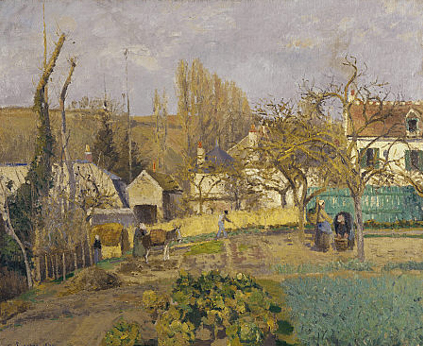Andrew Graham-Dixon reports on a Camille Pissarro show which looks beyond the subject matter
What began as a rebellion against the conventions of French Salon painting in the second half of the nineteenth century has become an industry in the second half of the twentieth. Impressionism has inspired more glossy art books, shifted more calendars and sold more picture postcards than any other art movement in history. Impressionist art survives reproduction so well, perhaps, because its mass appeal would seem to have almost nothing to do with its art historical significance - never, to be truthful, one of the major concerns of your average punter - and almost everything to do with its subject matter.
Impressionism is famous as the art of the picnic (or Dejeuner sur l'Herbe), of the weekend break or the month in the country. Looking at an Impressionist painting - Monet's promenaders in a sea of poppies, per-haps, or a group of Renoir's riverside bathers - it is easy to fancy yourself in a better, cleaner, more leisurely world, a place where 10-mile oil spills or holes in the ozone layer are things of the future. Impressionism of-fers (or seems to) a dream of escape.
But it is a seldom acknowledged fact that Impressionism appeals so strongly to twentieth century nostalgia partly because it was itself, in great measure, the product of nineteenth century nostalgia, a manifestation of bourgeois city-dwelling escapism. The Impressionists saw and painted a rural France that was, thanks to the advent of the Industrial Revolution, on the brink of dissolution. Old agricultural practices were being mechanised or rendered obsolete by swift alterations in market requirement; rural communities were being decimated by a major demographic shift to the cities and, in many cases, simply absorbed by the spreading metropolitan sprawl of major towns,...


